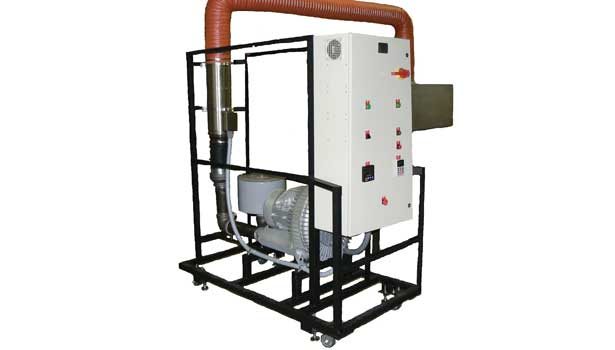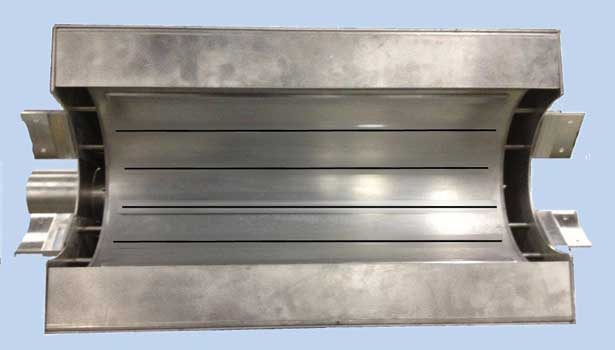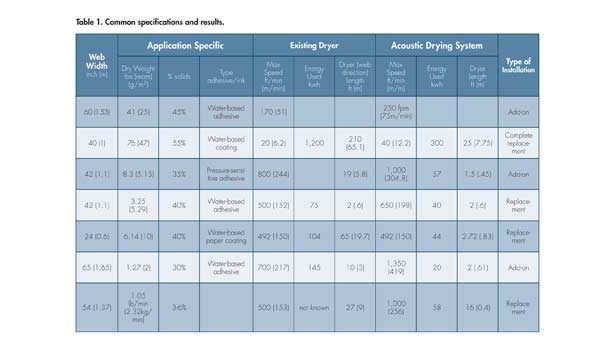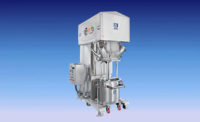In today’s mercurial economy, it is increasingly difficult for any printer or converter to remain profitable. Pressures come from multiple sources, including the fluctuating costs of utilities, the rising costs of raw materials and the continuous demand for ecologically friendly resources. It is important for the printers and converters of flexible materials—such as paper and films—to keep abreast of the available and innovative technologies that can help satisfy customers while ensuring a successful and profitable business.
The day-to-day operations of printers and converters are driven by the many variables of press operation, the demand for quality, and the specific end use of the printed material. These operations use solvent- or water-based inks and adhesives that require some method of drying other than ultraviolet (UV) or electron beam (EB) curing materials, which are cured using mercury lamps or an electron beam. Solvent-based ink and adhesive technologies have their own regenerative thermal oxidizer (RTO, or incinerator), associated maintenance costs, and environmental compliance requirements that have become even more complex as the world moves toward the use of more sustainable materials.
Comparing Alternatives
In general, water-based inks and adhesives do not require RTOs, and costs are therefore lower than the operational cost of printing equipment using solvent-based inks and adhesives. Continuous improvements in the quality of water-based inks and adhesives have been noticeable, and they have broadened their applications. To successfully switch from one type of ink or adhesive to another, however, manufacturers need to have efficient drying technology at their disposal.
Drying heavy loads of water-based (or sometimes even solvent-based) ink and adhesive can be challenging because of the increased residence (drying) time. In turn, the web speed of a press is slowed to accommodate the drying or poor print/coating properties, if drying is attempted without proper controls.
In high-speed applications, increased residence time is caused by the formation of a boundary layer on the material during the printing process. A boundary layer is similar to clouds that form on a large lake in the summer. In the morning, the sky above the lake is clear. The sun comes up and begins to evaporate moisture off the lake. As the moisture rises, clouds form; the sunny day turns into a cloudy day. These clouds essentially act as a barrier. The sun delivers the same amount of energy from above the clouds, but less of the sun hits the lake directly, so less moisture is removed.
Similarly, the boundary layer forms on the surface of the material as it moves through the production process and acts as an invisible shield against the hot air coming from the drying station. This invisible shield blocks air from penetrating the surface of the ink or adhesive and starting the evaporation process. Increasing the amount of heat and air helps with evaporation, but at lower efficiencies, and the process will eventually flatline. To tackle this problem, printing equipment OEMs have increased air volumes, increased temperatures, and even changed their angles of attack, but these efforts have had a limited effect.
Acoustic Technology Development
How can sound technology benefit drying? Think of the sound that is experienced at a loud rock concert: sound fills the concert hall and can actually be felt as you approach the speakers. That feeling is a pressure wave brought about by the movement of air created by the speaker. While manufacturing operations are certainly not looking to increase the amount of noise in their operations, that sound power can be carefully harnessed so that it is harmless to human hearing and is safe in the workplace.
Because sound pressure fluctuates and varies, oscillation is an important factor to consider. Think of implements that create inconstant pressure (e.g., a jackhammer, hammer drill or an impact wrench). These devices make it possible to achieve a result that the same amount of constant pressure could not achieve. The idea is the same with drying; the oscillation of ultrasound adds to the effect. Heat and air are more efficient at removing moisture in the presence of sound because the oscillating pressure wave affects the boundary layer.
Acoustic drying technology had its beginnings with pulse combustion, which accelerates heat and mass transfer through the appropriate use of acoustic oscillations with mean flow of the combustion gases. This was successfully applied in water heating, boilers, drying of minerals, sand, sludge, etc. However, the original technology could not be applied in flexible packaging, converting and coating applications because the oscillating flame directly impinges on the material. Simply put, it is a fire hazard. Driven by demand for the accelerated drying of water- and solvent-based inks and adhesives, researchers have combined hot air flow with strong acoustic oscillations and developed a drying system product line for that specific application.*
The drying system is an advanced convective or hot-air-based system. The hot air acts like a skilled massager by providing the boundary layer formed on the material with micro-massage to make it more pliable. As a result, the drying process is more efficient. The system is energy independent, can use hot air derived from an indirect or direct heating process, and pre-heats the air by an inline electric heater.
Benefits of Acoustic Drying
The benefits of the technology are considerable. First, acoustic drying results in up to a 70% increase in web speed. Less residence time under the drying station means the press can operate at higher speeds. The process also provides up to a 75% reduction in energy consumption. Acoustic drying uses the same or lower process air temperature than most current operations, even with increased speed. Experience demonstrates that many traditional applications requiring heat up to 300°F can be improved using acoustics with no additional heater inputs.
For water-based applications, acoustic drying technology requires nearly 50% less plant air, which translates to additional energy savings because plant air conditioning costs can be high. (Solvent-based solutions are limited by LFL considerations.) Finally, the technology represents up to a 67% smaller footprint; the length of the new drying system is often significantly less than traditional systems.
Acoustic drying technology was tested in applications for narrow- and wide-web operations as a replacement for existing equipment between color drying sections (usually with heavy ink or adhesive loads) or as a booster section, where physical space allowed installation. In both situations, throughput increased from 50-85% with 17-20% of added energy. Accelerated speeds were registered on shrink film and thermally sensitive papers, with the utilization of eco-friendly inks.
It is important to note that other factors beyond press speed must be taken into consideration. Improved drying is possible, but it can be limited by factors such as maximum speed, wind and unwind, sufficient ink laying, etc. Manufacturers should look for a drying system that can adapt to any press that uses water- or solvent-based inks or adhesives where replacement of the drying section is possible, or where it can be added as an extended range to help eliminate bottlenecks.
A compact dryer may result in additional savings due to the reduction of material costs, labor costs and capital expenditures. In addition, maintenance managers often advocate acoustic drying systems because of their advanced design and minimal maintenance needs—which are a subtle but still noticeable contributor to operational cost. As a result, OEMs have recently come to appreciate the benefits of the technology.
For more information, visit www.heattechnologiesinc.com.




